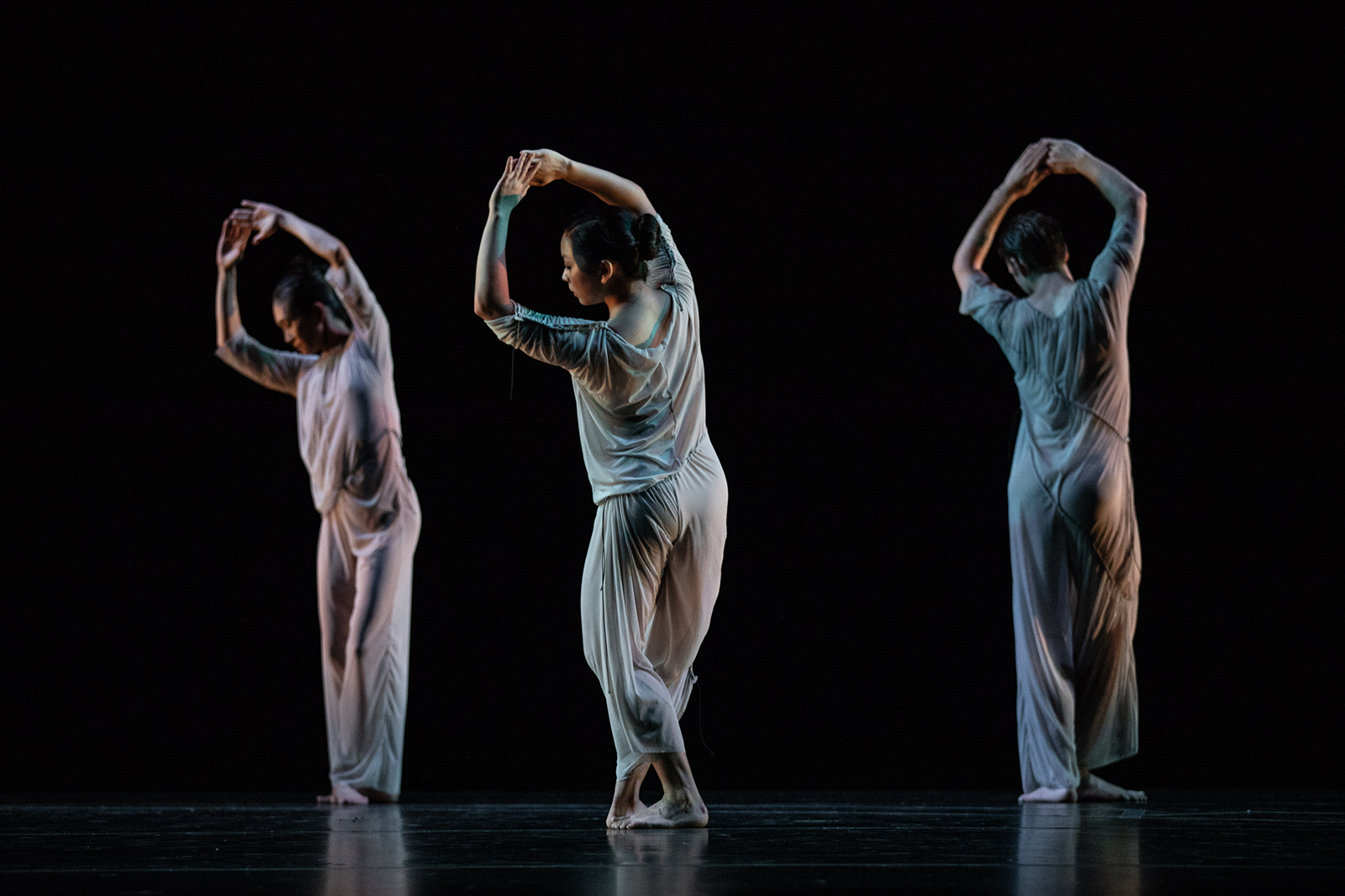‘Four Quartets’ performance to ponder T.S. Eliot’s poem through dance, art

Choreographed by Pam Tanowitz, “Four Quartets” brings T.S. Eliot’s poem of the same name to life with dance, music and art. The piece aims to explore how ideas of time and space exist within real life, and the poem and the performers collaborate with one another. (Courtesy of Maria Baranova)
"Four Quartets"
Feb. 15 - Feb. 16
Royce Hall
Prices Vary
By Hannah Ferguson
Feb. 12, 2020 10:44 p.m.
This post was updated Feb. 14 at 4:56 p.m.
“Four Quartets” brings T.S. Eliot’s poem of the same name to life with dance, music and painting.
Choreographed by Pam Tanowitz and performed by members of her dance company, the show will take place Saturday and Sunday at Royce Hall. Tanowitz said her interest in creating a dance based on “Four Quartets” came from the text’s own parallels to dance. The upcoming performance makes use of the text’s poetic rhythm and structure while transitioning from abstract to literal descriptions. Relying on collaboration among the musicians, the poem and the dancers, “Four Quartets” explores ideas of time and space, Tanowitz said.
“Sometimes there’s just text, sometimes there’s the music and the text, there’s parts with just music, so each element has its own highlight as well as together in a collaborative process,” Tanowitz said.
[Related: Lecture to fuse philosophical ideas with Chaucer’s ‘The Pardoner’s Tale’]
The piece begins with one soloist on stage accompanied by actress Kathleen Chalfant reciting Eliot’s poem. “Four Quartets,” written in four parts between 1936 and 1942, includes quotes ranging from the Hindu god Krishna to medieval saints, Chalfant said. Dancer Victor Lozano said the performance as a whole centers around the idea of time, reflecting on how the past and future impact the present, as well as each dancer’s own experience in time.
“When we’re there on stage, we’re pushing forward in our movement very cognizant of what already happened in the dance and knowing how much we have to continue on and push forward to complete the dance,” Lozano said.
Each element – dance, live music, painting and the poem – interacts with one another, as the dancers navigate a set inspired by the minimalist paintings of Brice Marden. By moving portable gauze curtains depicting the paintings, dancer Melissa Toogood said the dancers dissect the space in different ways throughout the show, dancing both in front of and behind the sheets. Chalfant, the dancers and the musicians take cues from one another, which means the piece is never executed the same way each time. Tanowitz said the organic interactions between each element create an interdependence among them.
In one interaction, Toogood said she walks toward Chalfant, stepping onto her metatarsal only to collapse onto a bent leg, communicating a sense of bodily breakdown. While performing this section, Toogood said she reflects on moments of difficulty in her life, specifically when she lost a pregnancy before she began rehearsals for this work. Toogood travels toward Chalfant on stage, juxtaposing delicately placed, intricate hand gestures with a sense of collapse as she transitions from one movement to the next.
“I’m sort of stumbling towards (Chalfant), … and then in the next verse, I stumble back away from her,” Toogood said. “The part of the poem talks about the fire and to me it feels a little bit like a moth drawn to a flame, and (Chalfant is) that flame.”
Each dancer has a separate path throughout the piece, which utilizes solos and small groups rather than the whole cast moving as one. As a result, each performer has a different experience executing the movement, Toogood said. Even in sections in which many dancers are on stage, Lozano said a discerning viewer will see layers of solos, duets and trios rather than choreography in unison, mirroring the chaos present in the poem.
[Related: Outdoor Shakespeare readings bring the Bard to a more social, casual environment]
Although the poem appears abstract, Chalfant said listening to the words spoken out loud often makes Eliot’s poem more clear. As part of her research for this performance, Chalfant visited the three places in England where Eliot wrote three of the four sections of the poem. During her visit, she noticed how much the words in each section reflected the location in which they were written despite the seemingly nonliteral nature of the poem.
“Four Quartets” evokes the sense that one is never fully aware of how their existence relates to time and history, which is evident through the poem’s reflection of how humans are unable to locate their lives in relation to all world events, Chalfant said. The audience members should use this work as a means to help them on their journey through life, as is echoed in the poem.
“I think that is the most striking thing about the poems – how concrete they are – because it seems to be terribly philosophical and abstract and all like that, but a lot of it is just what he saw,” Chalfant said.

